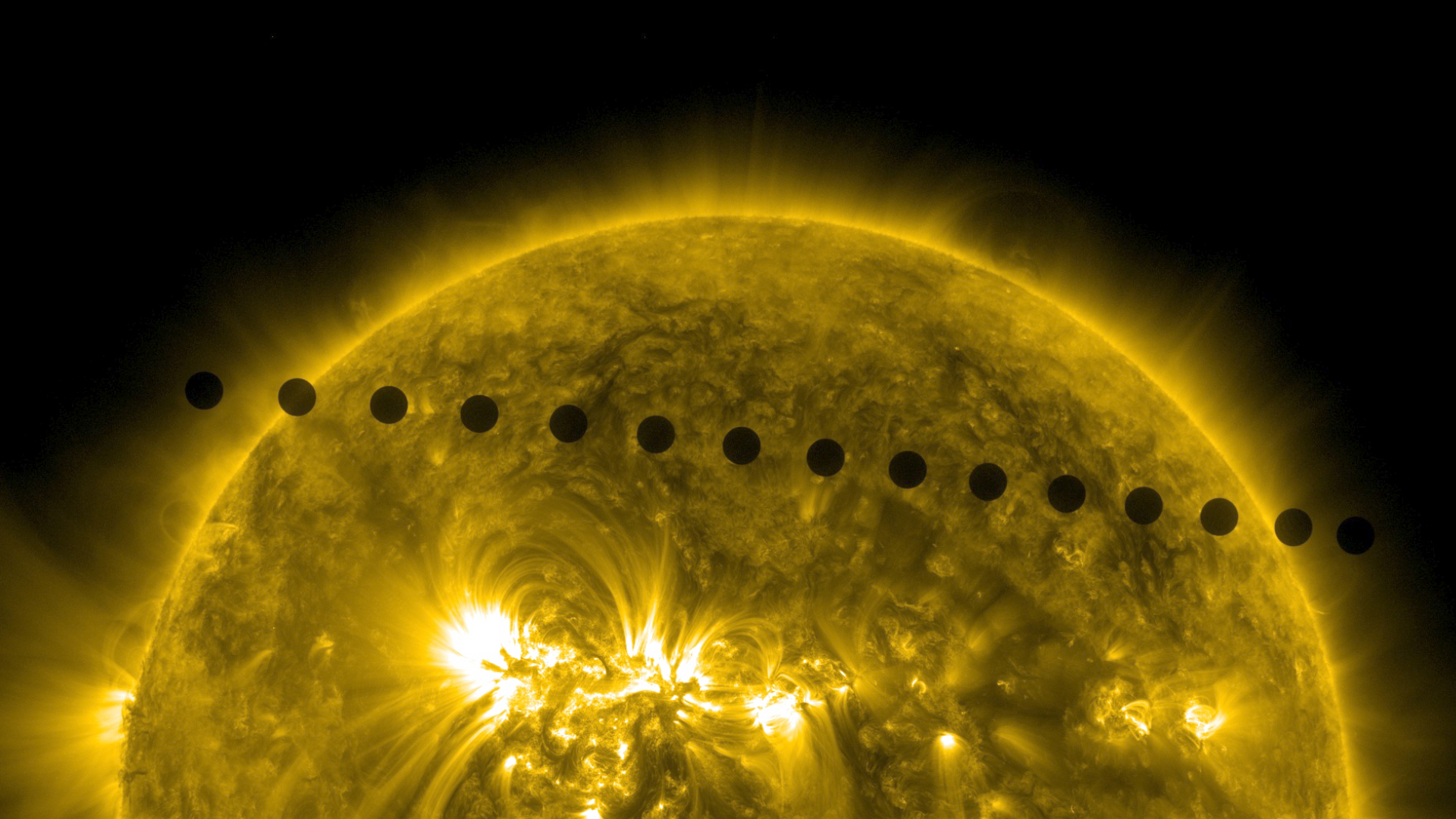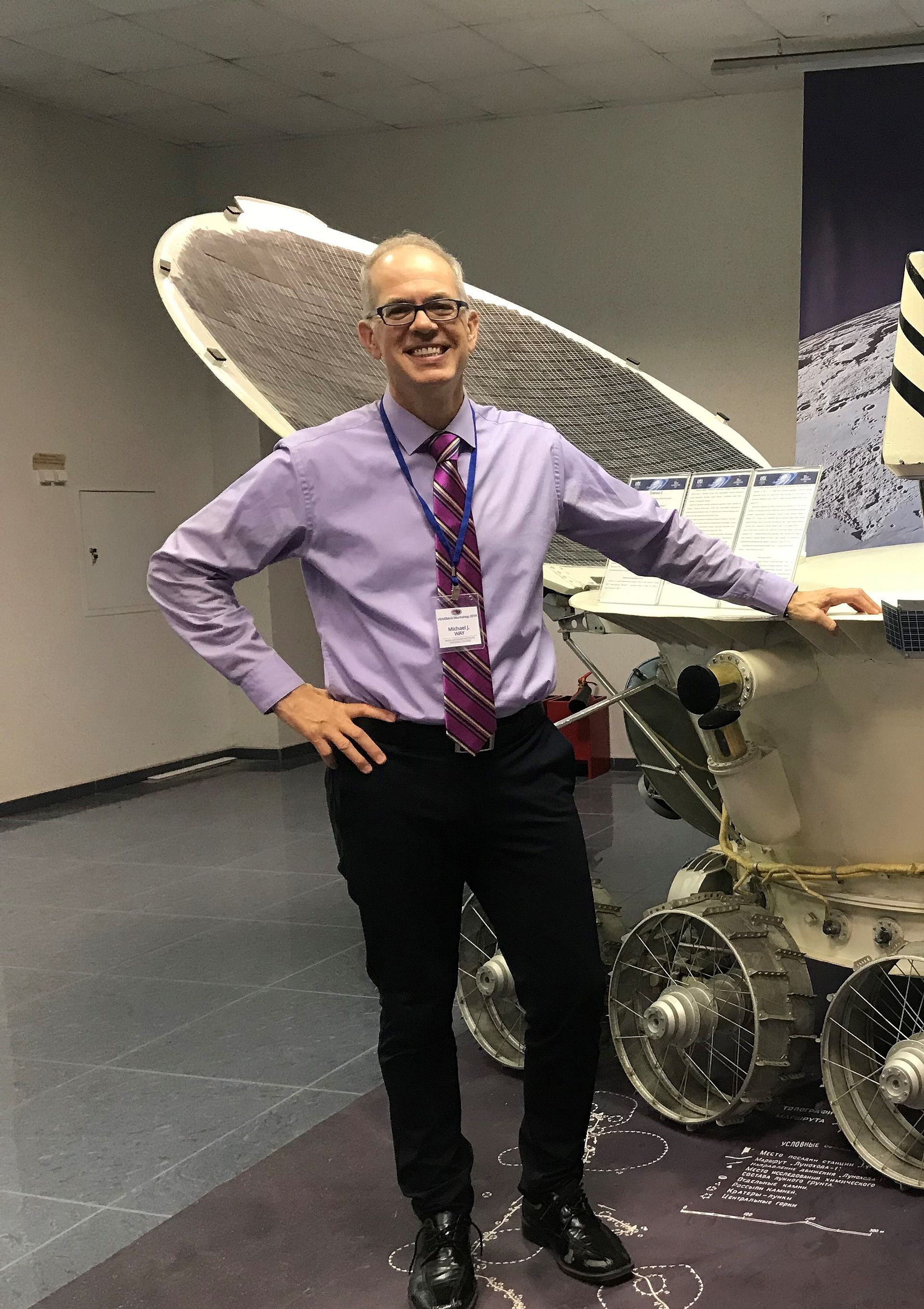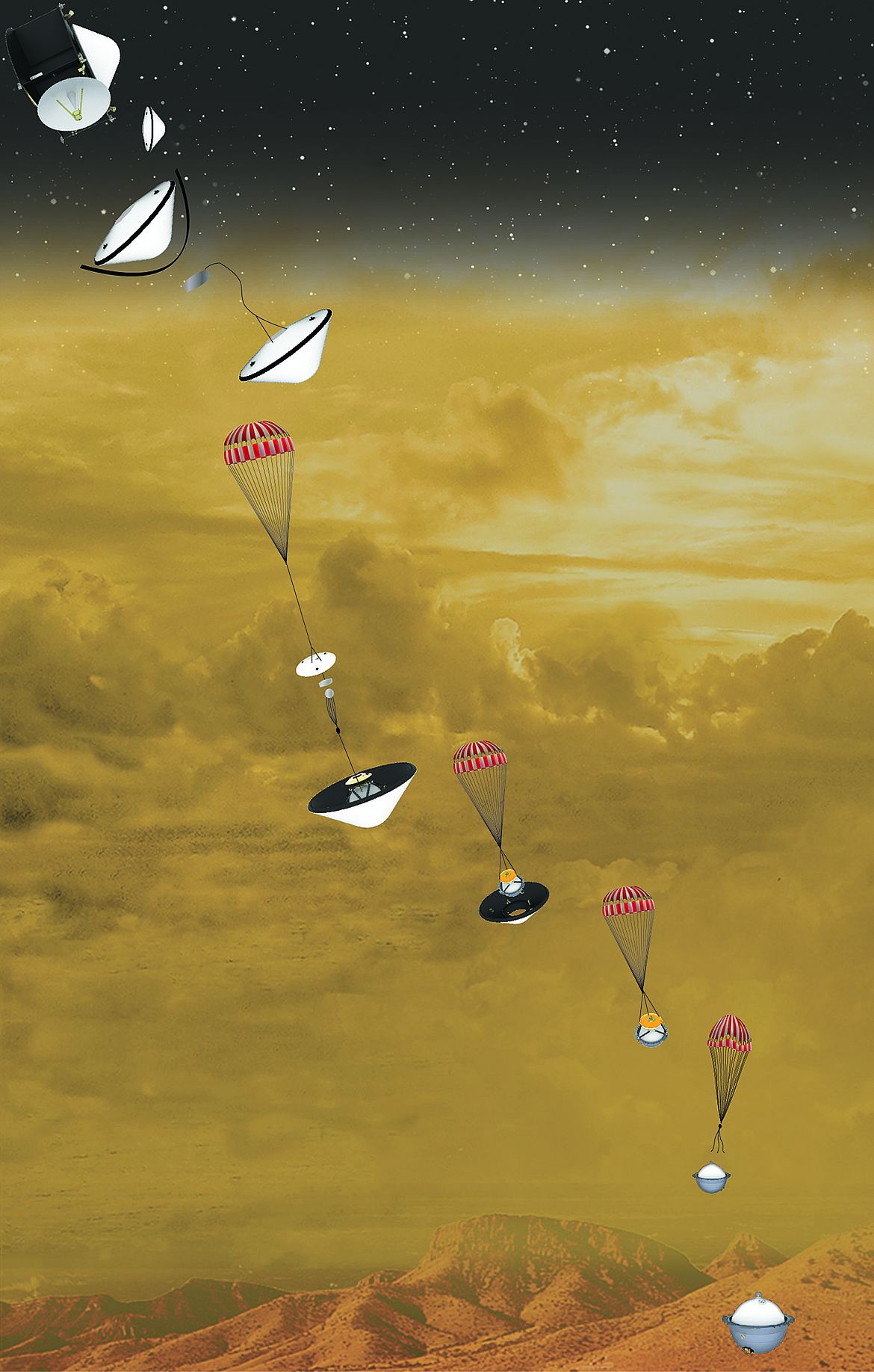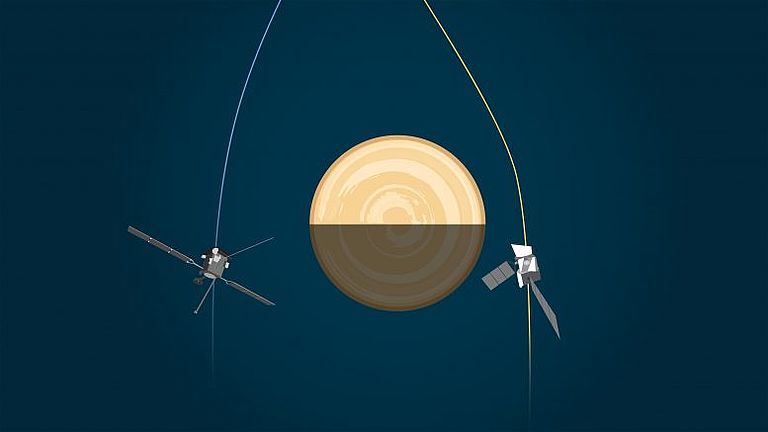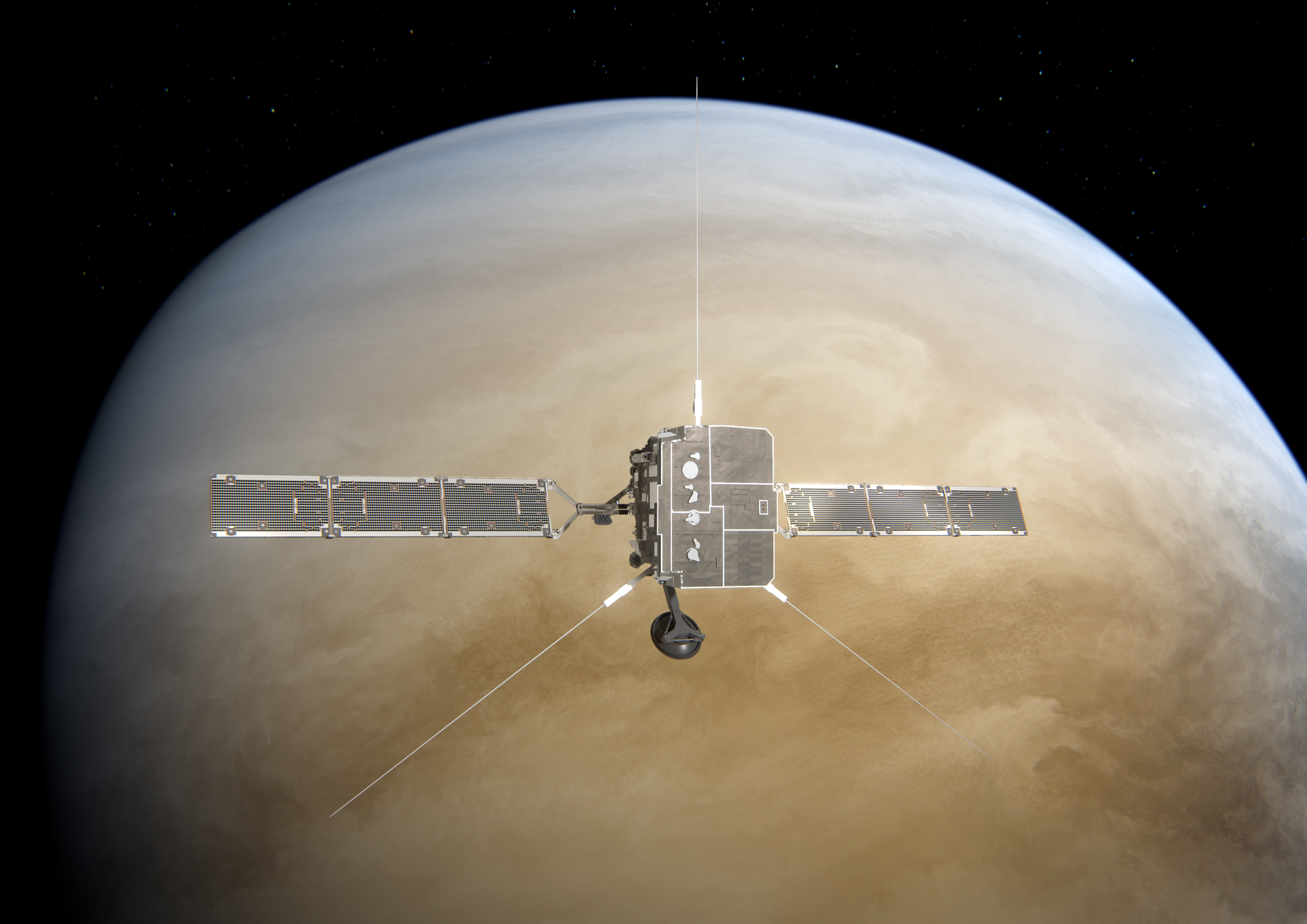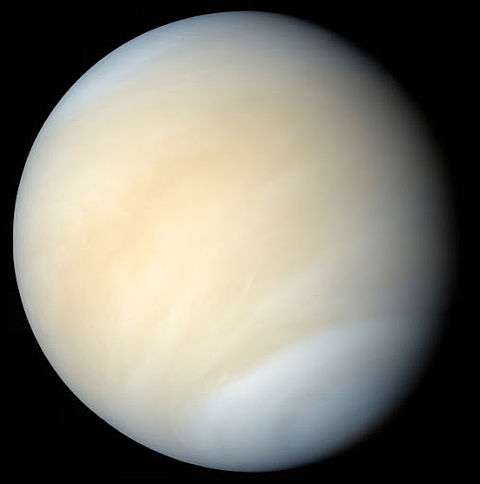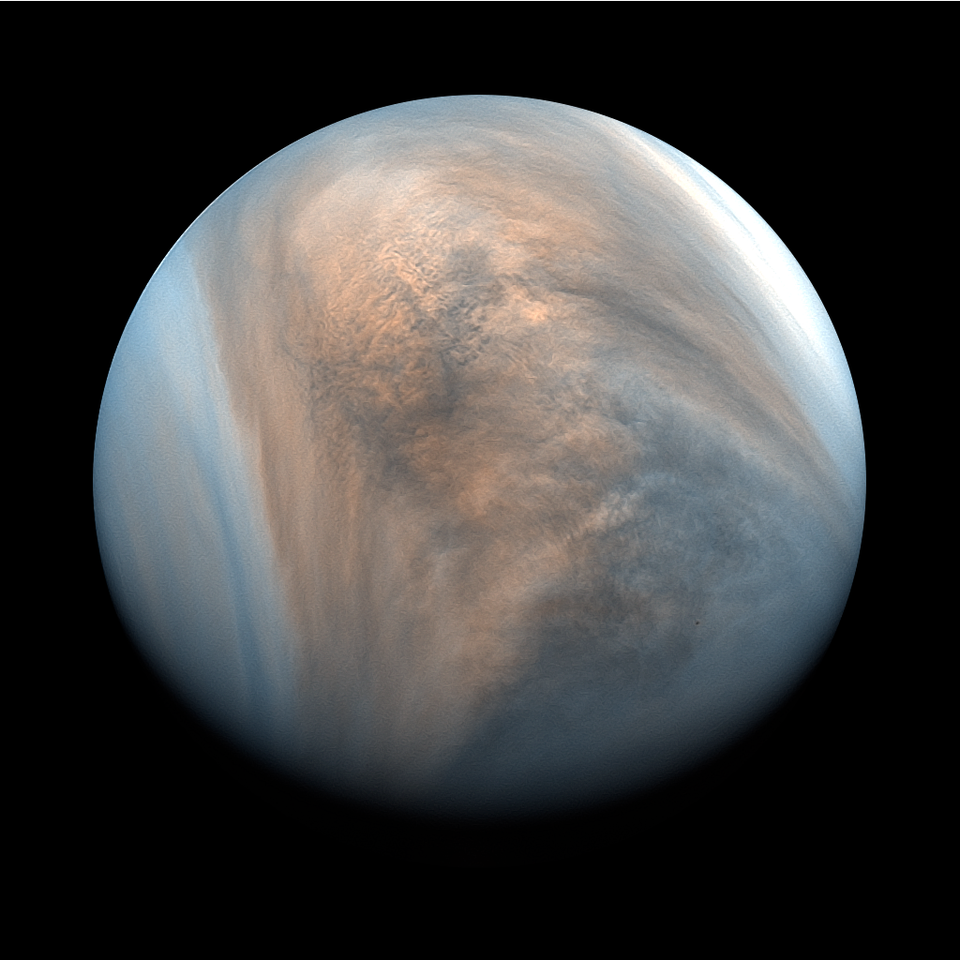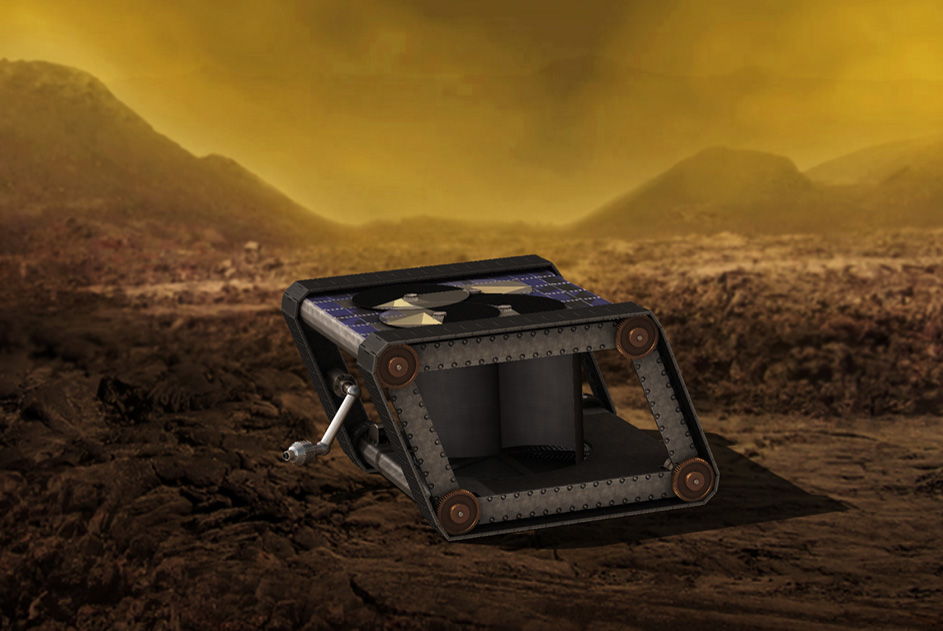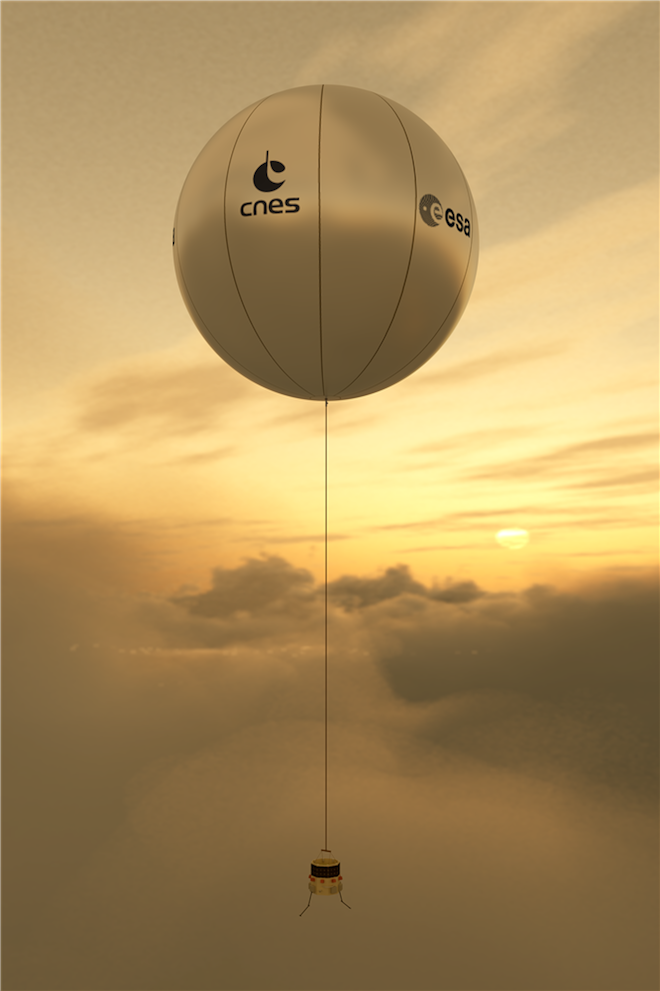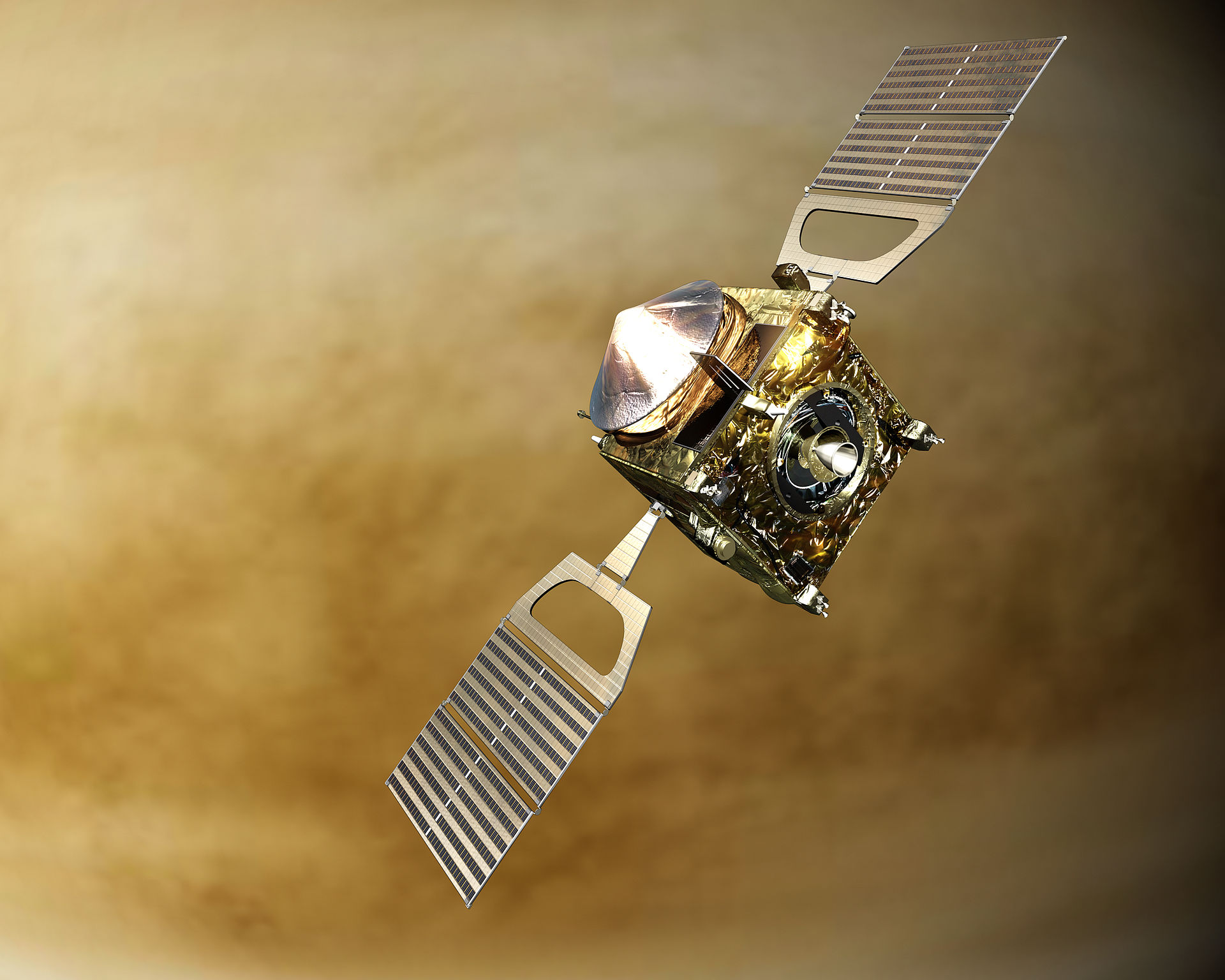Dr. Michael Joseph Way is a senior researcher at NASA’s Goddard Institute of Space Studies. His current scientific interest is focused on both the multi-scale structure of the universe and the modeling of planetary atmospheres. His most recent work includes the modeling of Venus’ climate history. In the corresponding research papers he hypothesizes that Venus has not always been the hostile place it is today, but has had a much more clement climate in the past. In an interview with OHB he explains why there is still a lot to learn about Venus and why he is hoping for a new lander mission.
OHB’s CEO Marco Fuchs recently said in an interview that he thinks that Venus is an interesting planet, maybe even more interesting than Mars. Would you agree to that?
Dr. Michael Way: (laughs) I think all the planets are interesting in their own way. So I would remain agnostic about that. All the planets have things to teach us, I should say.
Such as?
Well, the interesting thing about Venus is that is has a similar size and density - and mass of course – to Earth and there are geological processes on that world which look quite distinct from those on Earth. The geological processes on Venus are in some ways somewhat similar to what we see on Mars, but in other ways they are also quite different. For example, the surface of Mars has been geologically dead for well over 3 billion years, whereas the surface of Venus has been geologically quite active at least until the last 750 million years. Even today it is still geologically active in some ways. In that way it compares interestingly to Earth, which of course is also still geologically very active. There are a lot of interesting things to say about the comparative planetology, as we call it, of Earth and Venus versus Earth and Mars.
If both planets are interesting in their own way, why is it that Mars gets a lot of orbiters and landing missions and Venus does not?
Oh, that’s very easy. (laughs) It’s simply because it is much, much easier to get to the surface of Mars and make measurements. The kinds of things that we are doing on Mars, for example with the Curiosity rover or even with the Pathfinder mission, would cost one or even two orders of magnitude more – that means ten or a hundred times as much money – if we wanted to do them on Venus.
Why is that?
Because of the conditions prevailing on Venus. The surface of Venus is a completely hostile environment. The other thing is, you know, we have that mantra in NASA to follow the water. We know there is water ice on the surface of Mars. We see evidence that it does melt sometimes. We see sublimation. We see the size of the polar caps changing as they go through their seasonal cycle, as Mars goes around the sun. Mars’ obliquity of course means that there are different amounts of sunlight throughout the year at different latitudes. Whereas on Venus there is very little water. There is no water on the planets’ surface and only trace amounts of water in the atmosphere. So following the water the closest place we can go, the most accessible place, is Mars.
But why follow the water? To find traces of life?
Yes, we believe that water, that liquid water is required for life.
Does the lack of water mean that further missions to Venus are obsolete?
Definitely not! We still want to understand the geological processes and – more importantly in a sense– we want to understand the climate history. We want to understand the climate history to know if Venus had a period in its past that was much more clement and much more similar to present day Earth. And the only way we are going to do that, to understand that, is to send a series of missions back to the planet to make key measurements.
We want to [...] know if Venus had a period in its past that was much more clement and much more similar to present day Earth. And the only way we are going to do that, to understand that, is to send a series of missions back to the planet to make key measurements.
What kind of key measurements?
We have to find out about the noble gas abundances on the surface of the planet. And what are the oxygen isotope and nitrogen isotope and carbon isotope abundances? But on top of that we also have to make key measurements at the top of the atmosphere. What are the escape processes? What is the outgassing history of the planet? We need to understand not only the sources, but also the sinks. That would tell us about the amounts of water the planet had in its past. The other thing we really need to understand is the role of the magnetic field in atmospheric escape. You still hear all the time that the magnetic field protects Earth from losing its atmosphere. But we have a neighbor right next door that has no magnetic field to speak of, but still has an atmosphere that is almost a hundred times as dense as Earth’s.
What neighbor is that?
Why, Venus, of course! So there has been a lot of work in the last ten, fifteen years to understand atmospheric escape processes and the role magnetic fields play in those processes. And to fully understand them we have to do work on the escape processes for Earth as well. We probably understand atmospheric escape for Mars, which is also a non-magnetized body, which has no magnetic field to speak of, better than we do for Earth. We need to understand the escape processes for all three planets – Venus, Earth and Mars. Venus probably had a magnetic field early on, but we have no idea why it has no magnetic field today.
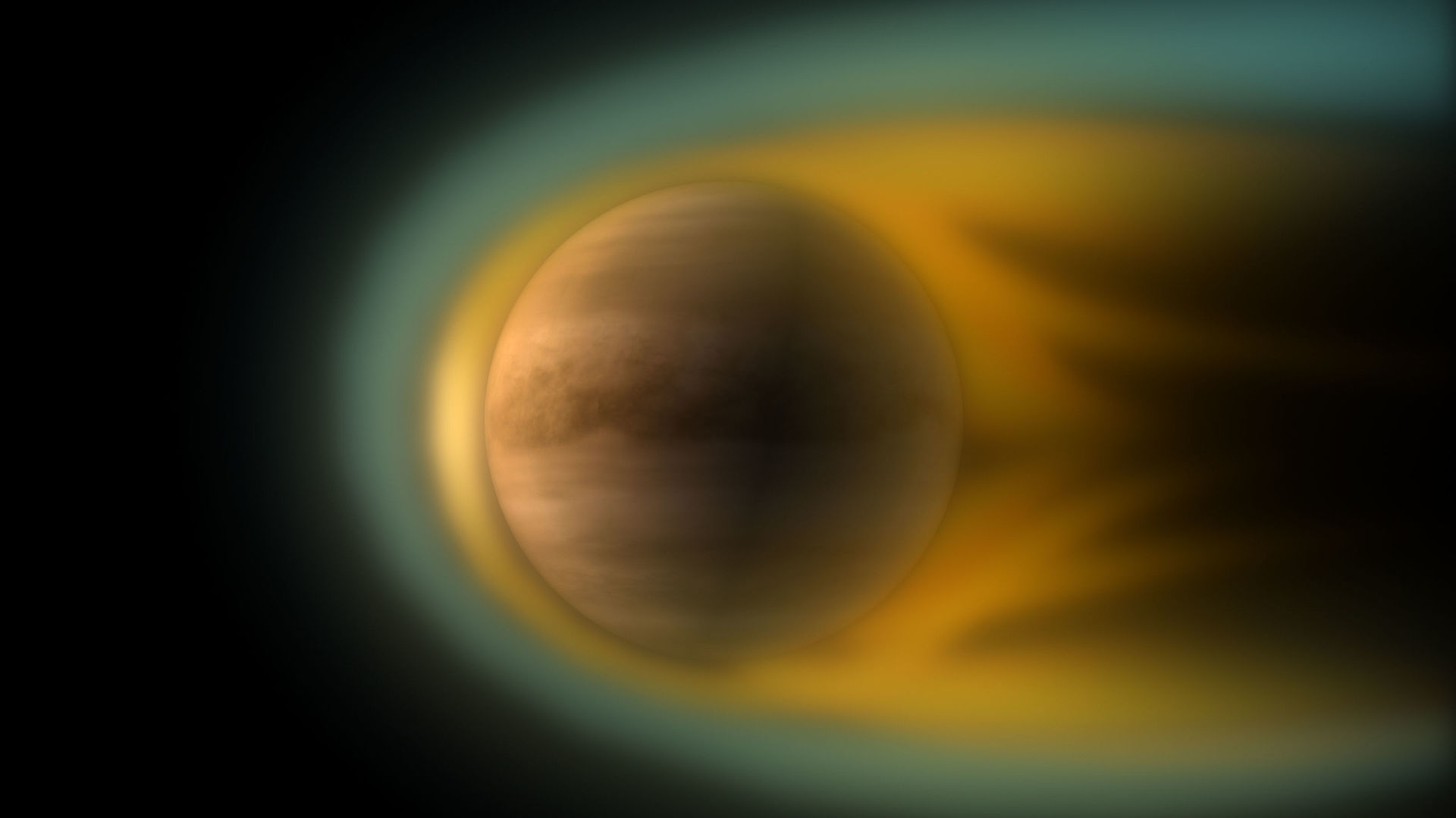
But there are a few things that we do know about Venus. How did we gather that information?
We really don’t know very much. I mean, what little we know about Venus comes from the few missions that have gone there. The Russians of course had the most successful space programs to Venus. They have had several successful landers, they have made some measurements on the surface of some of the noble gases, but we need more precise measurements and we need to measure all the noble gases.
But bringing a lander to Venus is hardly an easy task. Even the successful Russian landers did not survive very long in the conditions prevailing on the surface. Do we have the means today to make sturdier equipment?
Well, we still don’t have the proven technology to build sophisticated enough cooling systems to survive on the surface of Venus. The Russian landers that went there were only designed to last a couple of hours. And they met the design specifications. The made all their measurements really quickly before the bathysphere they were enclosed in got too hot and the electronics melted. NASA has been working on electronics that can work in high temperature and pressure environments – like on Venus. But we have a way to go still.
How long could such refined equipment last assuming the best possible circumstances?
Well, it depends on what you want to do. There are some what we call long-lived surface environment objects. One of the key ones – it’s called LLISSEE – is being developed by NASA’s Glenn Research Center. Their idea is basically to put weather stations on the surface to measure temperature and pressure and probably wind speed. Instruments like that would last hundreds of hours, maybe even up to a month. They would use very high temperature electronics and high temperature battery technology that are being funded by NASA. You would put these weather stations in several places around the planet, ideally at different altitudes. That would tell you some interesting things about the planet. So that’s one project. In addition to that, the Glenn research center has been working on a mission concept called SAEVe, which includes a seismometer that would last for some hundreds of days roughly. And that would allow you to make seismic measurements on the surface to understand if there are active seismic events going on today that tell us about the interior processes of the world.
And with that information we could then run more precise simulations?
Well, that would at least let us constrain our present day models of Venus’s atmospheric dynamics. We don’t understand the lower atmosphere of Venus very well. We just have a couple of profiles of atmospheric density and temperature from the Venera probes and also from the Pioneer Venus mission that NASA launched in the seventies. What people like me would like is to extend the capabilities of these long-lived surface missions to also make some key measurements of the noble gases, but I think we are quite far from developing these kinds of technologies. So in the short term at least, ideas today tend to be once again short-lived landers that would last a few hours at most.
Do we really need a landing mission to get the relevant parameters? Would an orbiter not be enough?
No, an orbiter would not be enough. There have been mission proposals for a deep dip satellite that would go below about a hundred kilometers in the atmosphere – that’s below what we call the homopause – where we think the atmosphere is well mixed. And if we could make the key measurements down there, which the satellite could make in a few minutes, that would tell us something useful. But there’s a lot of assumptions in that approach and I think again that we would prefer to put something on the surface to make these key measurements. You would have to make these measurements several times, of course, to get reliable results.
In your most recent paper you say that early Venus might have been habitable. So you say there might have been life on it?
Well, the most recent paper I wrote is a comparative planetology approach. I try to use what we understand about the evolution of Earth’s climate history to apply those lessons to what Venus’ early climate history would have been like. And at least our models show – there are some assumptions we have in those models – but our models show that Venus could have had quite clement conditions early on in its history just like Earth’s. And therefore if these clement conditions would have lasted, say, for an order of billion years or more then there would have been the conditions that would have allowed the rise of life.
Our models show that Venus could have had quite clement conditions early on in its history just like Earth’s. And therefore if these clement conditions would have lasted, say, for an order of billion years or more then there would have been the conditions that would have allowed the rise of life.
And if that life really existed, could we still find traces of it today?
That is a really good question. Well, I would say we haven’t thought enough about this problem yet. I would say that models like mine are a recent phenomenon in the field. People have speculated about these things, but no one had ever actually done the calculations. One proposal that people have talked about is to look in the clouds of Venus. On Earth we talk about extremophiles all the time and we like to take these extremophiles and put them in extreme conditions on other worlds like Mars or Venus. But, you know, these extremophiles have had billions of years to evolve here on Earth. We have life that has had billions of years to fill every single ecological niche it can find. So, if Venus has had habitable conditions for billions of years, life could have also evolved to fill every ecological niche possible while it was in that clement state. So the clouds are one place to look. People have mentioned this idea to look below the ground on Venus, but I think that there is a misconception that as you go down in the surface of Venus that the temperature would drop, but that is not the case.
Could the life on Venus have come from elsewhere in the universe? For example from Earth?
There is mass exchange between the planets, so it could be – although it’s not highly probable – that extremophiles have travelled from Earth and have seeded Venus. Or Mars. Those are all possibilities. But I think that people would be more willing to accept that life evolved on Venus and ended up in these kinds of extreme environments. But the first thing we really should do is find out if Venus had liquid water on its surface, how long it had that water and over what period of time the loss of that water occurred. Assuming we figure that out and assuming that the findings support our models that Venus has had long-lived surface liquid water then we can go back later and try to figure out if there are signs of life.
There is mass exchange between the planets, so it could be
– although it’s not highly probable – that extremophiles have travelled from Earth and have seeded Venus. Or Mars.
Do your simulations show what transformed Venus into that waterless hot-house of a planet that it is today?
Well, there has been some speculation in the community that Venus had temperate conditions early on and it was the gradual warming-up of our sun that changed it into the hellish state it is in today. And that speculation is based on what we know about Earth. You know, there is this issue that is called the Faint Young Sun Paradox: If you take present day Earth’s atmosphere and you give that atmosphere to Earth four billion years ago, then you get an Earth that is an ice-house world, because the solar luminosity is 20 to 25 percent less than it is today. The sun has gradually grown in brightness over the years and the reason why Earth has not been in an ice-house state the whole time could be atmospheric change in that period of time. So, there were these early ideas about early Venus being clement and that it became inclement because the solar luminosity increased over time.
But according to your simulations that is not the case?
No, our simulations show that this is definitely not the case. If early Venus had clement conditions it would have maintained these conditions despite the increase in solar luminosity. But we see that the surface of Venus is fairly young, somewhere around 80 percent of the planet have been resurfaced over the last 750 million years. And that resurfacing is probably what changed the climate of the planet. There have been similar events in Earth’s history. Things like the formation of the Siberian Traps or the Deccan Traps. In addition, of course, to large impactors like the Chicxulub impactor and things like that. But imagine, in a way we have been a little bit fortunate that we have not had several of these large-scale igneous provinces, which are basically large-scale volcanism, go off at once. But there is no reason why it could not happen.
So if several igneous provinces had gone off at the same time at some point in Earth’s history Earth would look like Venus today?
Well, this kind of event would trigger a climate catastrophe where you dump huge amounts of carbon dioxide into the atmosphere. The planet would be driven into what we call a runaway greenhouse state, you would start to lose your water. And as you lose your water, your subducting plate tectonics, which give Earth its carbon cycle and nitrogen cycle and keep the atmospheric pressure in balance, shut down. You end up in a stagnant or single-plate mode as we call it. There is no longer any volatile cycling. It becomes a one-way process, so you only have outgassing. You have no subduction, you have no way to pull gases out of the atmosphere as Earth does today. And that is why Venus ended up in the state it is today.
You are talking about climate change and the role of carbon-dioxide in inducing a runaway greenhouse state, so is there any possibility that what we see on Venus could be a glimpse into the future of Earth?
I think it’s very difficult to compare these two worlds in this sense because the state Venus is in today took hundreds of millions of years to get to. On Earth we have very serious short term problems, but to get to Venus’s state would require something much more catastrophic. I mean, our planet is in a very sensitive balancing state and we are doing some very terrible things, but getting to Venus’ state requires a very large scale geological process. So it’s not directly comparable. There are some lessons for us on how climates evolve that have had large amounts of carbon dioxide loaded into their atmosphere, but we’re talking about orders of magnitude more carbon dioxide than we are currently loading into the atmosphere. So it’s a difficult comparison to make. I know people want to make it because it’s compelling, but in that respect the event that occurred on Venus and the things currently happening on Earth are not directly comparable.

